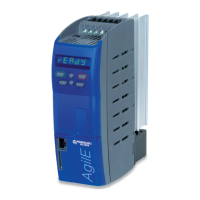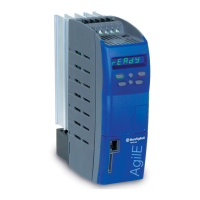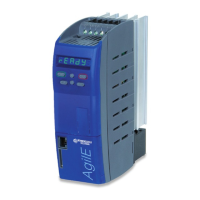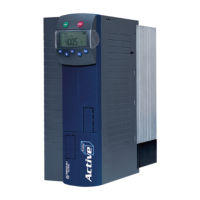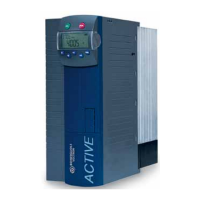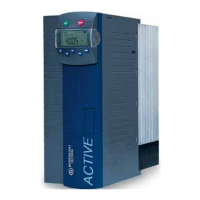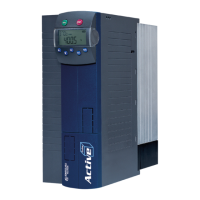Parameter descriptions
WARNING
The control functions listed in the following table may affect the synchronous operation
of the drives. It should be checked if these additional control functions are switched on
and if they are required.
Intelligent current limits
Current limit value controller
Switch over Torque control
Reference Frequency Source 1
Added reference frequency value
Reference Frequency Source 2
Via parameter
Controller Status 275, you can display if a controller is active.
The function of the electronic gear is realized by configuring digital inputs of the slave frequency in-
verter as a reference frequency input. If the master drive is a frequency inverter, the repetition fre-
quency output of the master frequency inverter is used.
7.5.4.6.1 Frequency inverter as master drive
If the master drive of the electronic gear is a frequency inverter, the following parameters (for exam-
ple) can be set for the transmission of the repetition frequency.
• Select operation mode "20 – Repetition Frequency MFO1F" for parameter
Operation Mode MFO1
(X13.6)
550. As a result, the multifunction output is used as a repetition frequency output.
• Via parameter
RF/PT: Output Value MFO1F 555, select an operation mode for multifunction
output 1.
• Set the value entered for parameter
RF: Division Marks 556 according to the frequency required
at the repetition frequency output. This is the number of pulses per motor revolution for the repe-
tition frequency. The pulse duration depends on the motor speed. By default, this parameter is set
to 1024. When making the settings, take the frequency limit of the frequency output of 150 kHz
into account. The maximum value S
max
which can be set for parameter RF: Division Marks 556
is:
valueFrequency
Hz 000 150
S
max
=
7.5.4.6.2 Frequency inverter as slave drive
For the function of the electronic gear via the repetition frequency, the following parameters (for ex-
ample) can be set at the frequency inverter of the Slave drive.
• For parameter
Operation Mode IN2D 496 select: "20 - RF Single Evaluation" or "21 - RF Double
Evaluation" (RF: Repetition Frequency). Digital input IN2D is the repetition frequency input. See
chapter 7.6.7.2 "Repetition frequency input".
• Since the rated speed decreases when the number of pole pairs is higher (n~1/p), different
speeds may result if the master drive and slave drive have the same reference frequencies. Adjust
the values for parameters
Divider 497 of the repetition frequency input of the slave drive and
RF: Division marks 556 of the repetition frequency output of the master according to the num-
ber of pole pairs of the motors in order to obtain the same speeds for the master drive and the
slave drive. Different speeds can be realized by setting the gear factor.
Different values for parameters
Rep. Freq: Divider 497 of the repetition frequency input of the slave
drive and
RF: Division Marks 556 of the repetition frequency output of the master result in different
speeds of the master drive and the slave drive if the number of pole pairs of the motors is the same.
167
Reference Values 06/2013 Operating Instructions
Agile
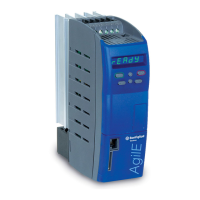
